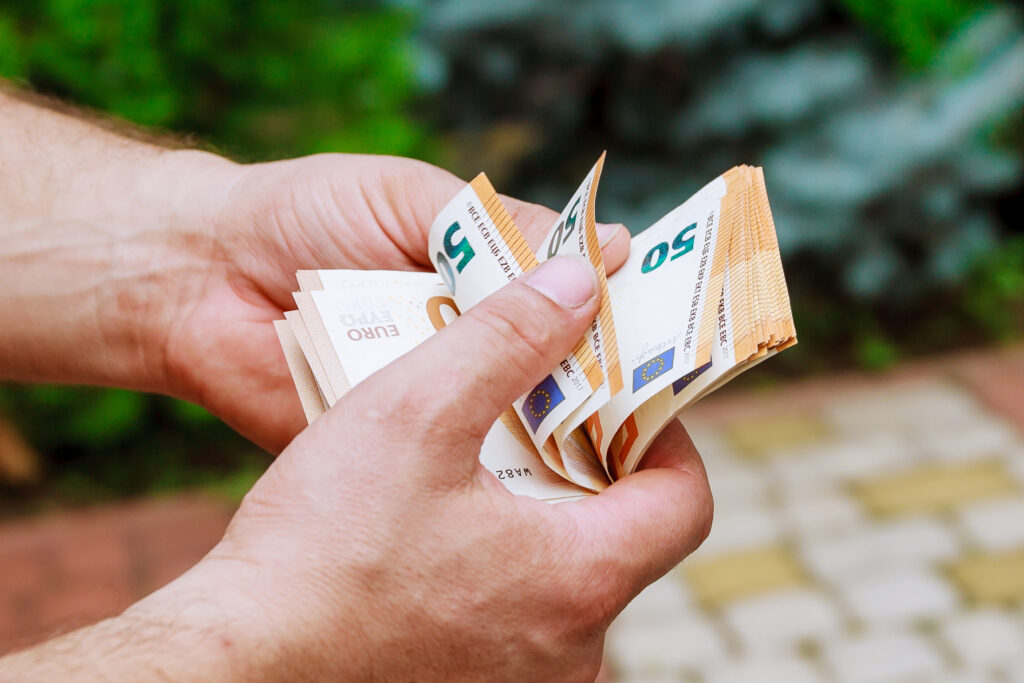(Reuters) – Resurgent oil prices hurting a deteriorating economy and renewed concerns about Italy’s fiscal position mean headwinds for the euro are getting stronger, raising the risk of a move back towards the psychologically key $1 marker.
The euro, trading at its lowest levels of this year near$1.05, fell 3% versus the dollar in the third quarter. It is poised for a third straight year of losses.
Much of this can be explained by a broadly firm dollar given the U.S. economy’s resilience and cash sucked in from abroad as 10-year Treasury yields creep towards 5%.
Yet increasingly, euro area specific factors, particularly exposure to higher oil prices, risk further weakness in an already stagnating economy, and the single currency.
The euro is especially vulnerable to rising oil prices, with net imports accounting for over 90% of oil products available in the European Union.
“High oil prices are weighing on the euro area’s terms of trade, and if oil prices move above $100 per barrel to $110 per barrel we think it will be difficult for the euro to avoid parity,” said Nomura’s G10 FX strategist Jordan Rochester.
Oil prices surged almost 30% in the last quarter alone, nearing $98 last week, as oil producing group OPEC and its allies squeeze crude supply.
Barclays, among other banks, expects oil to reach $100 in the coming months.
Nomura now expects the euro to weaken to $1.02 by year-end, which would imply a further 3% fall from current levels.
Morgan Stanley chief Europe economist Jens Eisenschmidt said besides being more exposed to energy shocks, the euro area is also more exposed to geopolitical risk than the United States.
This hurts the bloc’s competitiveness and dents the euro’s longer-term prospects, the former European Central Bank economist added.
Morgan Stanley did not expect a fall to parity, but still expected a further weakening to $1.03.
A weak euro helps boost exporters’ competitiveness. But it also lifts price pressures through higher import costs, compounding the impact from higher oil prices. This suggests the ECB may need to pay more attention although it doesn’t seem too worried now.
On the trade-weighted index closely followed by the ECB, the euro fell just 0.9% last quarter and is roughly 2% higher compared to where it ended 2022.
When the euro hit parity against the dollar last year, for the first time in 20 years, the ECB said it was watching the currency because of its impact on inflation but did not target a specific level.
ITALY WATCH
For ING currency strategist Francesco Pesole, another warning sign is Italy. The closely-watched yield premium Italian debt pays on top of Germany last week touched 200 basis points, a threshold, he said, that normally coincides with a pick-up of the correlation between that premium and the euro.
“Should we see a material deterioration in the Italian bond market, and barring a swift reaction by the ECB to calm investors, euro/dollar downside risks would extend to the $1.00/$1.02 area,” said Pesole. He added that a backdrop of solid U.S. data and a hawkish Federal Reserve was also important.
For sure, euro weakness could be limited if the U.S. economy slows along with inflation, which could take the shine off a dollar at 10-month highs versus a basket of peers.
“If we have a combination of higher (U.S.) unemployment and lower inflation, that’s negative for the dollar,” said Athanasios Vamvakidis, global head of G10 FX strategy at Bank of America.
But “you can see euro-dollar at parity if the U.S. economy starts to weaken but inflation is sticky – though that is a risk not our baseline,” he said.
The nearer-term outlook suggests other challenges for the euro.
Investors have held bets on euro strength for some time and latest positioning data shows a net long position worth $13 billion. A further unwind could exacerbate downward momentum.
And with the ECB signalling the end of its most aggressive tightening cycle on record is likely over, the boost from higher rates has faded.
Gilles Moec, chief economist at AXA Investment Managers, said while the ECB’s September rate hike would usually have been a euro positive, expectations for much weaker economic growth dominated.
“Definitely the euro zone is not in a good place right now,” said Moec, adding that he did not rule out a euro move to parity.



